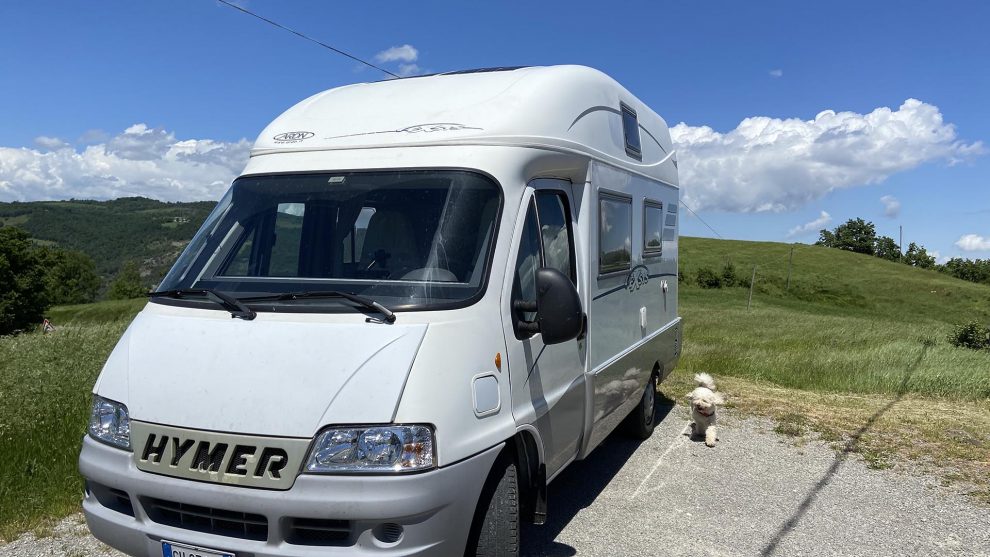August 15, 2021 – This 2021 will not be included among the best years of our scrapbook. After all, we can’t even get to 2020, where however – despite the pandemic – things hadn’t gone so badly. Today, however, we find ourselves dealing with a long series of “setbacks”. We have already talked about the general situation in our last post, while this time we want to detail Falkor’s state of health a little more. Not because it should interest you in a particular way, but rather to warn those who are considering a life experience in a van starting from vehicles whose initial investment is limited.
Not that choosing a van of a certain age is an absolute wrong choice, quite the contrary. There are many reasons why an “aged” vehicle can sometimes be preferred to one that has just left the factory. Our Hymer Exsis proves it. But there is no doubt that with an elderly “home” you have to be ready to face the unexpected. We do regular maintenance at Falkor, but having no mechanical skills we have to defer to what the professionals tell us when we entrust it for ordinary interventions (service) or for scheduled ones (ordinary maintenance: tires, pads, belts and so on). If we do not receive the notification that it is necessary to intervene on some element, we await the classic failure. That this year was not long in coming.
The first is not solved
The first problem we had, paradoxically, is also the one we haven’t solved yet. In March we began to perceive a strange noise from the left front wheel, a sort of intermittent resonance with a speed that went hand in hand with that of Falkor, more evident in straight running. Having reported the matter to the mechanic, he immediately indicated the bearing as the origin of the problem. Since his workshop is small and Falkor cannot be lifted onto the bridge, he sent us to a friend of his, also a mechanic. The two spoke on the phone and within a couple of days the operation was carried out: replacement of the right bearing!
Basically, the vehicle has not been tested, the mechanic misunderstood which side was affected by the problem and a visual inspection revealed that the right bearing was now at the end of its life. We were on the eve of our departure for Santorso, where we had to carry out the technical updating of Falkor, and therefore we postponed the analysis until our return. Of course, after letting the mechanic try the camper, reassuring us about the safety of the vehicle.
Beware of the brake!
When we left, passing through Milan, however, the handbrake warning light came on. The classic red light, the one that inspires terror by saying “stop now”! Falkor did not show any obvious problems, but we preferred to stop in a workshop in the city, to be told, even in a rather rude way, that it was certainly the worn pads and that in any case they would not have had the time and opportunity to take a more detailed look. Too bad that the user manual, for that light, says that it comes on only in 3 cases:
- 1 – when applying the handbrake
- 2 – when the brake fluid level drops below minimum
- 3 – simultaneously with the ABS warning light to signal an anomaly to the electronic braking corrector EBD.
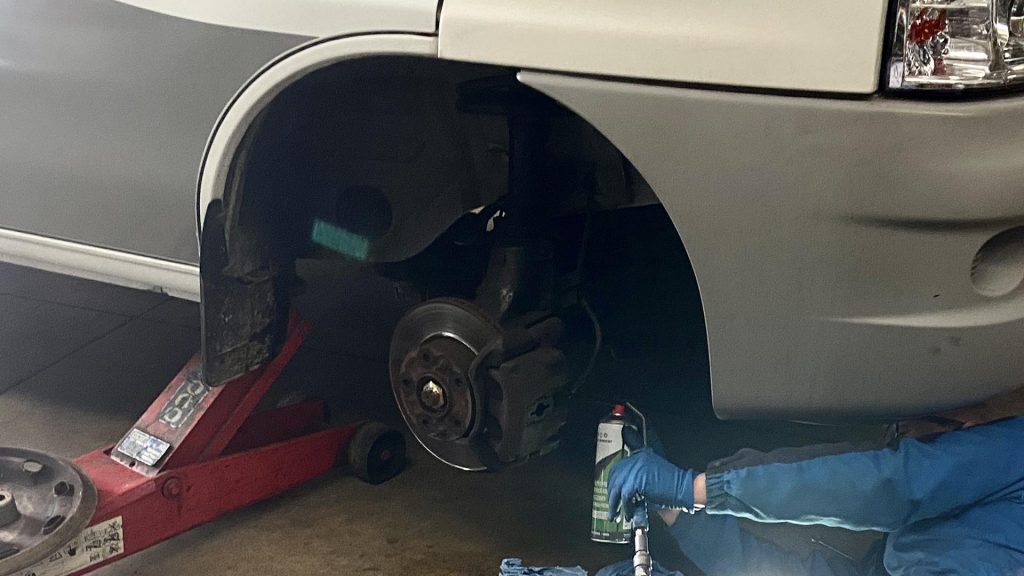
So there didn’t seem to be any doubts, and if the brake fluid goes down you can’t stay so quiet. With caution, avoiding the highway and – braking gently and in advance – we went back to Arese, to our mechanic, and we discovered that the system pipe connected to the right front caliper had loosened until the brake fluid came out at the inside of the wheel: a problem that could have led to very serious risks. The helpfulness and courtesy that we found on the occasion transformed him into “our” mechanic, whom we’d like mention here: thanks Salvatore and thanks to Race Motors from Arese.
Goodbye radiator…
Here the third problem emerged, not serious: one of the radiator’s supports gave way. The spare part must be ordered, so for the replacement you go calmly on return. After returning from Santorso, from the Gulliver’s workshop, we place ourselves at the home of Paolo’s parents waiting for spare parts. But… horror! From the front, a liquid of unknown origin drips very slowly. Upon examination of the various tanks, the origin is discovered: it is the cooling one.
Another analysis by Race Motors is inevitable. The diagnosis is merciless: rupture of the radiator due to rust. So, we change the cooler and its support and put our hearts in peace. Meanwhile, Salvatore gets to the bottom of the noise coming from the left wheel and finally comes to the conclusion that the brake caliper, in release, does not open completely and slightly touches the disc. So, the hunt for spare parts, which I always prefer original, starts.
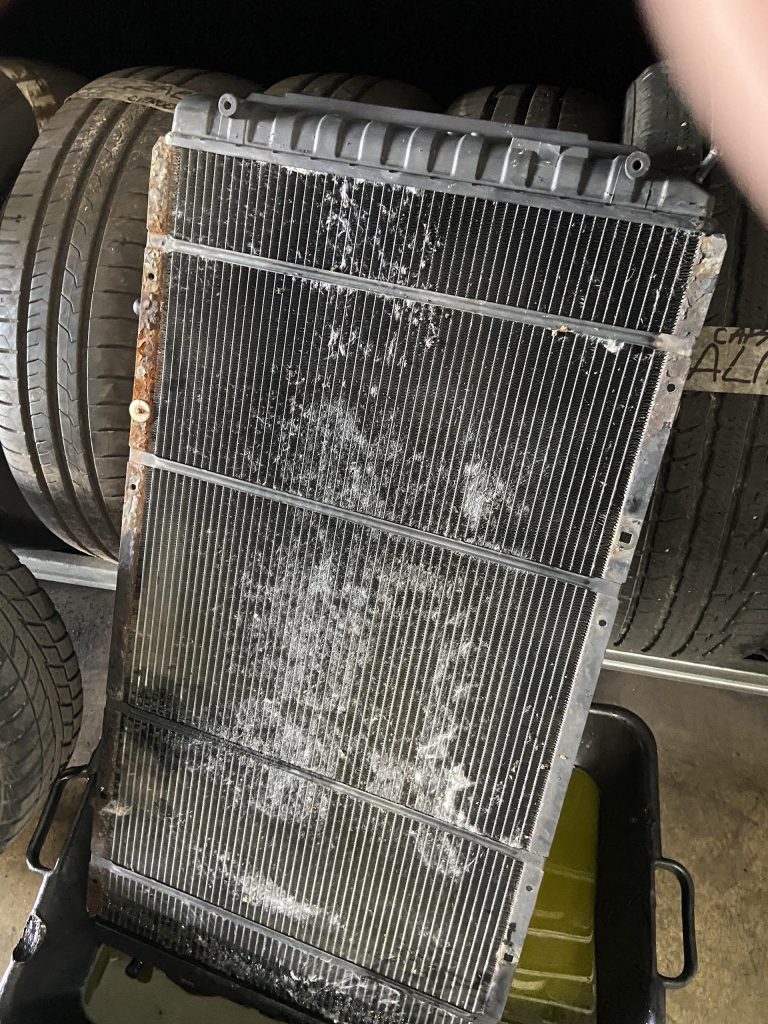
A glass now lazy
In order not to miss anything, since the purchase of Falkor in 2017, the left-hand electric window has often proved to be unruly, remaining blocked several times. To get it started again, it was necessary to be brutal and to resort to vigorous door closures, sometimes helping the engine in the rising phase of the window. We had already intervened in the body shop a couple of years ago, disassembling the engine, cleaning it and lubricating it, but the benefit lasted a few months. So, we took the opportunity to change it along with the radiator and support.
But the relief from the many maintenance jobs didn’t last long. “Emigrated” for a few weeks in the temporary residence of San Sicario, in the upper Val di Susa, we leave Falkor parked alone for the first time for a few days, with all the utilities disconnected, the 12 Volt turned off and no connection to the electricity grid(which normally at Paolo’s parents’ house, where we went through most of the lockdowns, instead we have). After a week the engine battery is not dead… more: not even the single LED of the control unit that signals low voltage can light up!
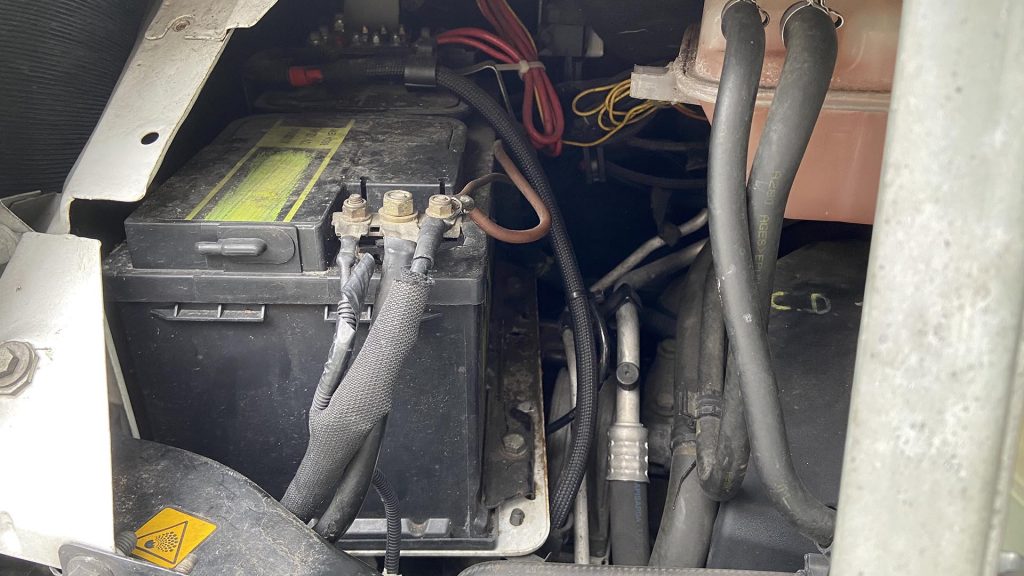
New battery from Fiamm!
Cables and boosters do not get out of our way, and therefore we have to resort to the tow truck, which takes us downstream. We didn’t know how old our battery was – it was already installed in 2017 and who knows how long it had been there. Among other things, already during the work in the workshop in Tuscany it had discharged, but we had blamed the forgotten radio on. The conclusion is only one: it is time to change it, even if “painfully” and knowingly we know that buying it from a small mountain workshop would not have been cheap. We are fitted with a Fiamm for the “modest” sum of €260 and we think we have solved it.
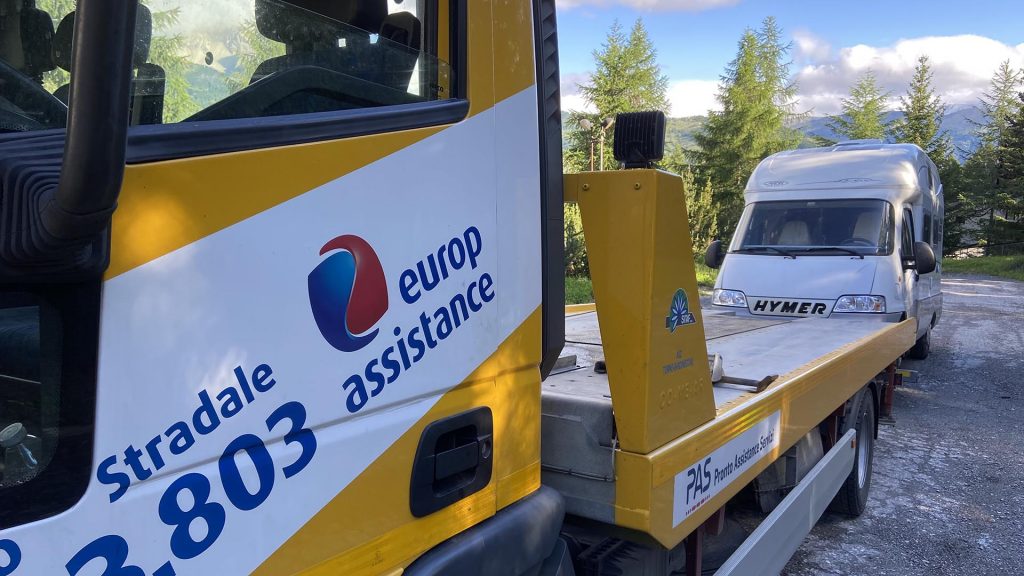
We return to San Sicario and after two days we notice that the voltage is low (we have no specific instruments, only the Hymer control unit, which gives us green LED when the voltage is sufficient, orange when it is low, red if the situation is critical). We start Falkor for half an hour keeping it at 2,000 rpm, turn it off, check the green LED and go back to the apartment that hosts us. The next day, however, it repeats itself. Another half hour of starting, green LED and everyone at home. After 24 hours, the situation worsened: this time the LED is red, and the engine does not start. The problem, now it is clear, is not in the battery. Thanks to a slight descent, we leave without cables or boosters and go back to Arese: there, mum and dad’s 220 Volt awaits us, which also keeps the engine battery charged!
A car radio that is too voracious
After a brief analysis and a remote consultation with Gulliver’s friends, we decide that it is better to understand where the problem is and relying on an auto electrician may not be the best choice. The decision is therefore to go to Santorso, where with half a day of measurements and tests we arrive at the right conclusion: the car radio is the culprit. But what happened? And why did we only notice it so long afterwards?
The answer lies in the usual damn “do it yourself”, a wonderful thing to save money, perfect for those who know exactly what he is doing, but potentially harmful for those who, while armed with good will, only proceed with common sense. Here’s how it went on this occasion.
When we bought Falkor, we found an LG 1-DIN car stereo installed without too many frills: an AUX input, but no Bluetooth. As we are smartphone addicts, we have been waiting for the right opportunity and at the end of November we launched ourselves into the purchase of a Sony XAV-AX8050. Bought on Amazon on offer for €450 (at the time of writing it costs €512, DAB antenna included), it is always a 1-DIN solution (which avoids us having to find or rebuild the dashboard to accommodate double DIN solutions on our Ducato x244), but with a 9-inch screen. All compatible with Android Auto and Apple Car Play. Incidentally, we are delighted with its performance.
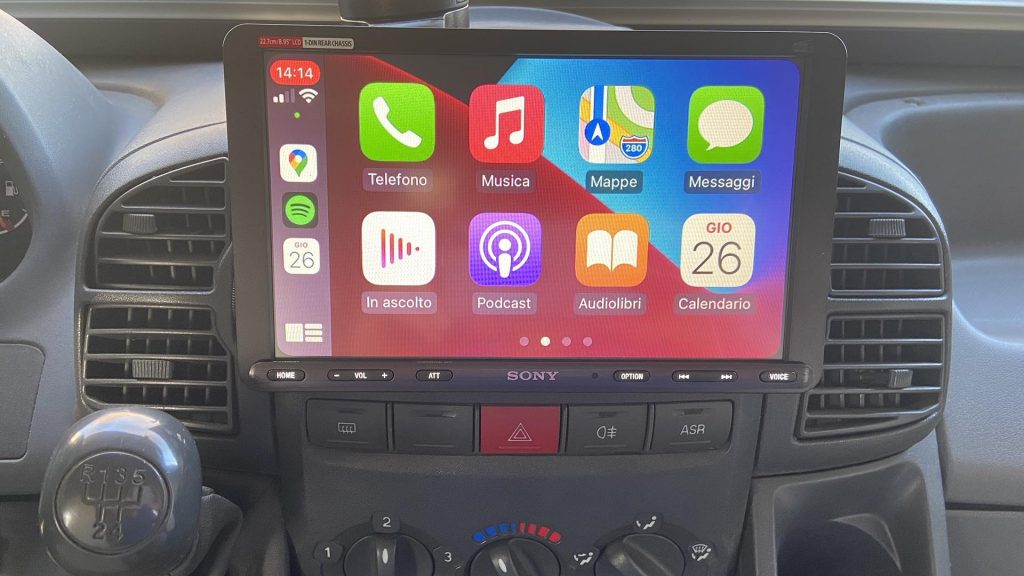
Do it yourself in the end too expensive
At the time, we were in a new lockdown, spent on that occasion in a campsite on Lake Maggiore, and so we decided to make do. After all, how difficult can it be to assemble a car radio? Not too much in fact, but… Since we are not technicians, we said to ourselves, the simplest thing to do is unplug the standard connector of the radio that was installed and connect that of the new radio: “plug-and-play”. And so it was.
But there is always a “but”! Those who had mounted the LG, instead of using the standard Ducato wiring, had made sure that the radio was always powered, even in stand-by. Usually there are a wire under the key for the operation of the radio (which can therefore be turned on only by turning the key) and a wire that always carries 12 Volts to keep the memory of the clock and radio stations. In order to be able to use it even when the vehicle is stationary, the wiring had been modified.
How important is the expert’s eye
This is perfect for a radio that when turned off only consumes a few milliamps to hold the memory, but in the case of Sony, which is an advanced system with Bluetooth, this does not happen. When you turn it off, the connection with paired devices is still active and Bluetooth consumes a relatively high amount of current: the clamp meter told us about 1 amp. Removed the snatch made by the previous owner, everything is back in place. Sure, the radio doesn’t work for us when stationary, but we’ve always used a tablet and Bluetooth speaker, so we won’t miss it.
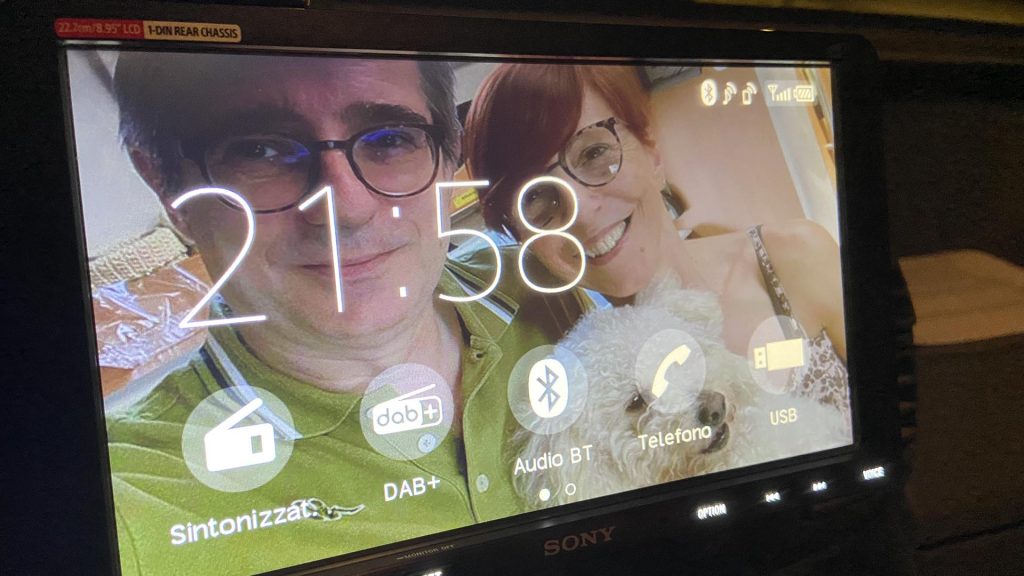
An expert eye would have immediately seen the change, which happened when we relied on professionals, but we just thought “What’s wrong with disconnecting a connector and attaching a compatible one”? Our inexperience cost us a battery replacement (which in any case we would have had to do sooner or later), a trip and a day and a half of time.
Rocking, look how I am rocking…
In all this, given the numerous unforeseen events, we have continued to postpone an intervention that must be done for some time: that of suspensions. Previously we already knew that the shock absorbers were at the end of their life, but the surprise of the last few weeks was to see that the rear right one is also gone.Crossbows used to do their job, but now Falkor is tilted to the right side by a few centimeters, with the bumper almost at the stroke end and the crossbow almost flat. A sign that the shock absorber isn’t working correctly anymore.
When carried in scale, Falkor proved to be “in line” even at full load and not only globally, but also on the individual axles. What probably creates some imbalance is the weight distribution: on the right there are both the two gas cylinders and the clear water tank, and in the end on that side it weighs an average of 100 kg more than on the left. Race Motors, Salvatore… be warned: as soon as you reopen the workshop, as well as the brake caliper, we must also talk about this!
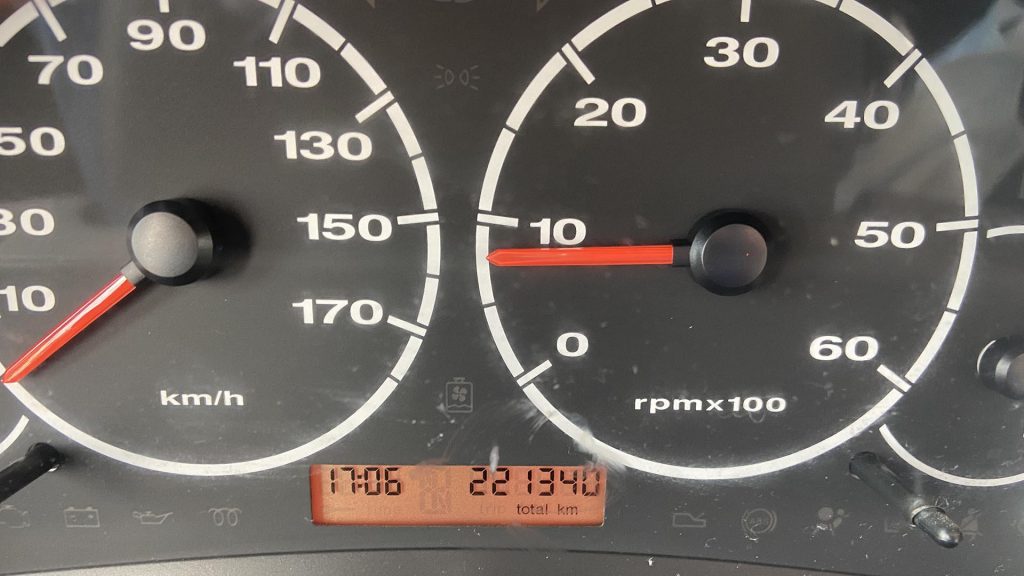
Ultimately, after 4 “quiet” years, in which we had serviced, replaced the timing belt and pump, changed pads, renewed tires and dealt with hail, 2021 presented us with the bill of a vehicle that still has 16 years of life and 221,000 kilometers on its back. Nothing tragic and nothing unsolvable, but you have to be ready even for the most complicated moments, knowing that it will take time and money to keep your home in shape.
©2021 seimetri.it – If you want to leave a comment on this article, you can do it on our Facebook page











